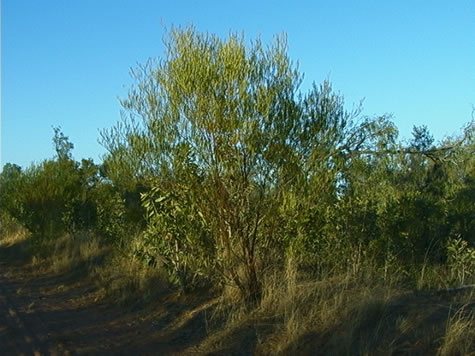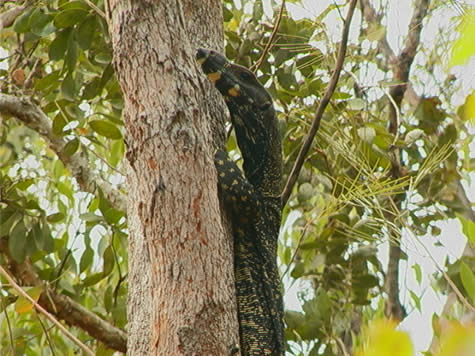2001 August 13, Monday. Between the Gulf Developmental Road and Flinders Highway, South of Malpas Station.
Lately, our camps have been little mirrors of one another. Although we are cycling strong, we set up each camp in country which looks like the one we struck that morning. It has been simple to settle into a daily routine, without having to deal with the unpredictable environmental factors we faced earlier in the trip, as we passed through the Great Dividing Range. The tracks are now long and straight, with little alteration in direction or altitude.

The stunted box eucalypts have petered out entirely, giving way to sparse, scrubby wattles and tea trees – the sole shade protection for what is almost the only other plant which is able to grow here – spinifex grass. Their fine stems reach long and still from the hot sand, breaking suddenly into life and sound only when an animal, roused by the passing cyclists, disturbs their mute calm.

Hearing movement in the spinifex, we have looked to the rustle of undergrowth to find wild pigs, birds, wallabies, cattle, and, more recently, emu. During my time in Queensland, I have also seen, in the wild, the following animals:
Skink Sand fly Tortoise Toad Jabiru
Echidna Cassowary Possum Mantis Kangaroo
Wildcat Jacana Crocodile Gecko Rat
Tree frog Mosquito Fish Fox Spider
Snake Brolga Locust Parrot Wild dog
How far do you need to travel from your home before the landscape changes? Does one type of tree predominate, or is there a mixture? Are there mountains, forests, plains, beaches, desert, or grasslands close to your home?
Write down all of the animals which live in your area – you might be surprised just how many you can list. Which animals share the same type of environment?
bel